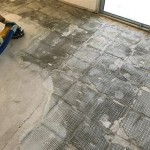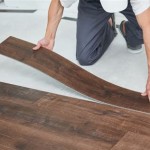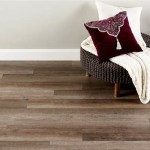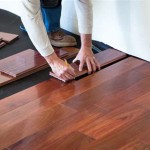The Benefits and Drawbacks of Cork Flooring in Bathrooms
Cork flooring has gained increasing popularity in recent years, particularly for its unique combination of natural beauty, comfort, and sustainability. While often associated with kitchens and bedrooms, cork flooring is also emerging as a viable option for bathrooms. This article will delve into the benefits and drawbacks of using cork flooring in this specific space, providing valuable insights for homeowners considering this material.
Benefits of Cork Flooring in Bathrooms
Cork flooring offers several advantages that make it a compelling choice for bathrooms. One of its most notable strengths is its
water resistance
. Cork is naturally hydrophobic, meaning it repels water and moisture. This characteristic makes it suitable for a space like a bathroom, where spills, splashes, and steam are common occurrences. While cork isn't completely waterproof, its ability to resist water penetration significantly minimizes the risk of damage and mold growth. This inherent resistance also contributes to the longevity of the flooring.Beyond its water-resistant nature, cork flooring boasts
exceptional comfort and warmth
. Its naturally soft and springy texture provides a pleasant underfoot feel, reducing stress on joints and offering a sense of luxury. This characteristic is particularly beneficial in bathrooms, where users often stand for extended periods. Moreover, cork is a natural insulator, keeping warmth in the winter and reducing heat in the summer. It contributes to a more comfortable and inviting bathroom environment, especially for those who prefer a warm floor.Cork flooring also stands out as a
sustainable and eco-friendly choice
. It's made from the bark of the cork oak tree, a renewable resource that requires no cutting down of trees. The harvesting process is environmentally responsible, minimizing environmental impact. Additionally, cork is naturally antibacterial and hypoallergenic, making it suitable for those with allergies or sensitivities. It can help create a healthier and more sustainable living space.Drawbacks of Cork Flooring in Bathrooms
While cork flooring offers numerous benefits, it's also essential to consider its potential drawbacks, especially in a bathroom setting. One of the most significant considerations is its
susceptibility to staining
. Cork flooring, while resistant to water, can be easily stained by certain substances, such as dyes, oils, and strong cleaning agents. This vulnerability necessitates careful cleaning practices and the avoidance of harsh chemicals. Regular maintenance, including sealing and cleaning, is crucial to maintain the flooring's appearance and prevent staining.Cork flooring can also be
prone to scratches and dents
. While durable, it's less resistant to scratches and dents compared to harder flooring materials like tile or stone. This vulnerability is more pronounced in high-traffic areas, where the constant movement of people and furniture can cause damage. To mitigate this risk, it's advisable to choose a higher-quality cork flooring with a protective sealant and to use furniture pads to prevent scratches.Another factor to consider is the
cost
. Cork flooring is generally more expensive than traditional bathroom flooring options like tile or vinyl. However, it's important to note that the long-term benefits, including its durability and sustainability, can offset the initial cost. When making a decision, it's essential to weigh the cost against the overall value and longevity of the flooring.Factors to Consider When Choosing Cork Flooring for Bathrooms
Several factors should be considered when deciding if cork flooring is the right choice for your bathroom:
-
Moisture Level:
Evaluate the bathroom's humidity levels and ensure sufficient ventilation to prevent excessive moisture buildup that could affect the cork flooring. -
Traffic:
Assess the level of foot traffic in the bathroom. Higher traffic areas may require a more durable cork flooring with a protective sealant. -
Maintenance:
Consider your willingness and ability to regularly clean and maintain the cork flooring to preserve its appearance and longevity. -
Budget:
Compare the cost of cork flooring with other bathroom flooring options and determine if it aligns with your budget.
In conclusion, cork flooring can be a viable and desirable option for bathrooms, offering natural beauty, warmth, and sustainability. However, it's crucial to weigh the benefits against the potential drawbacks, such as susceptibility to staining and scratches, and to consider factors like moisture levels, traffic patterns, and personal maintenance preferences. By carefully assessing these factors, homeowners can determine if cork flooring aligns with their needs and preferences for a comfortable and stylish bathroom space.

Cork Flooring Pros And Cons Is It The Right Choice For You Angi

Cork Flooring Pros Cons And Everything You Need To Know

Cork Flooring Pros And Cons Everything You Need To Know America S Floor Source

Cork Flooring Guide Specifics Pros Cons Fantastic Handyman Au

Cork Flooring Vs Wood Floors Which Is Right For You Artisan Llc

Cork Flooring Pros And Cons Everything You Need To Know America S Floor Source

Cork Flooring Pros And Cons Icork Floor

Pros And Cons Of Cork Flooring Is It Right For You Bob Vila

6 Bathroom Flooring Materials For Safety Style

Inimitable Cork Flooring Benefits Installation Future Trends
See Also







